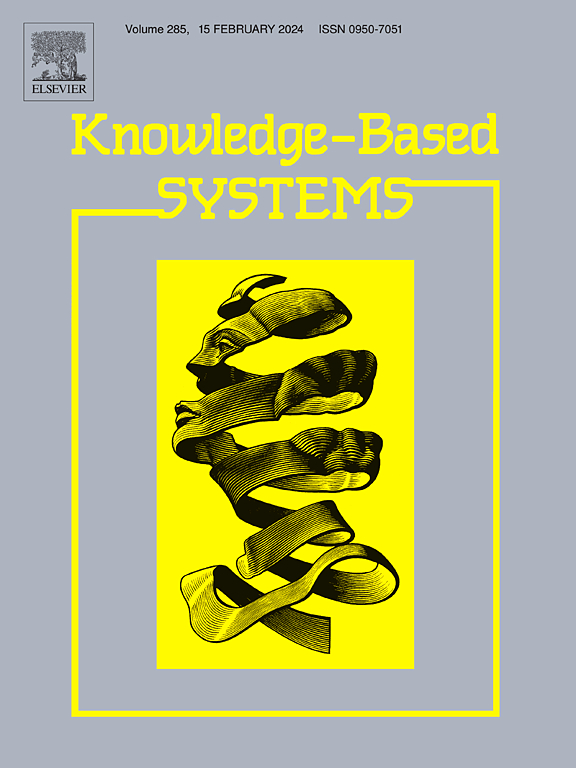MSSTGNN: Multi-scaled Spatio-temporal graph neural networks for short- and long-term traffic prediction
IF 7.6
1区 计算机科学
Q1 COMPUTER SCIENCE, ARTIFICIAL INTELLIGENCE
引用次数: 0
Abstract
Accurate traffic prediction plays a crucial role in ensuring traffic safety and minimizing property damage. The utilization of STGNNs in traffic prediction has gained significant attention from researchers aiming to capture the intricate time-varying relationships within traffic data. While existing STGNNs commonly rely on Euclidean distance to assess the similarity between nodes, which may fall short in reflecting POI or regional functions. The traffic network exhibits static from a macro perspective, whereas undergoes dynamic changes in the micro perspective. Previous researchers incorporating self-attention to capture time-varying features for constructing dynamic graphs have faced challenges in overlooking the connections between nodes due to the Softmax polarization effect, which tends to amplify extreme value differences, and fails to accurately represent the true relationships between nodes. To solve this problem, we introduce the Multi-Scaled Spatio-Temporal Graph Neural Networks (MSSTGNN), which aims to comprehensively capture characteristics within traffic from multiscale viewpoints to construct multi-perspective graphs. We employ a trainable matrix to enhance the predefined adjacency matrices and to construct an optimal dynamic graph based on both trend and period. Additionally, a graph aggregate technique is proposed to effectively merge trend and periodic dynamic graphs. TCN is developed to model nonstationary traffic data, and we leverage the skip and residual connections to increase the model depth. A two-stage learning approach and a novel MSELoss function is designed to enhance the model's performance. The experimental results demonstrate that the MSSTGNN model outperforms the existing methods, achieving state-of-the-art performances across multiple real-world datasets.
MSSTGNN:用于短期和长期交通预测的多尺度时空图神经网络
准确的交通预测在确保交通安全和减少财产损失方面发挥着至关重要的作用。STGNNs 在交通预测中的应用受到了研究人员的极大关注,其目的是捕捉交通数据中错综复杂的时变关系。现有的 STGNN 通常依靠欧氏距离来评估节点之间的相似性,但这可能无法反映 POI 或区域功能。交通网络从宏观角度看是静态的,而从微观角度看则是动态变化的。以往的研究人员在构建动态图时采用自注意捕捉时变特征,但由于 Softmax 极化效应容易放大极值差异,导致忽略节点之间的联系,无法准确反映节点之间的真实关系。为解决这一问题,我们引入了多尺度时空图神经网络(MSSTGNN),旨在从多尺度视角全面捕捉交通内部特征,构建多视角图。我们采用可训练矩阵来增强预定义邻接矩阵,并根据趋势和周期构建最佳动态图。此外,我们还提出了一种图形聚合技术,以有效合并趋势和周期动态图。我们开发了 TCN 来为非平稳交通数据建模,并利用跳接和残差连接来增加模型深度。我们设计了一种两阶段学习方法和一个新颖的 MSELoss 函数来提高模型的性能。实验结果表明,MSSTGNN 模型优于现有方法,在多个实际数据集上实现了最先进的性能。
本文章由计算机程序翻译,如有差异,请以英文原文为准。
求助全文
约1分钟内获得全文
求助全文
来源期刊

Knowledge-Based Systems
工程技术-计算机:人工智能
CiteScore
14.80
自引率
12.50%
发文量
1245
审稿时长
7.8 months
期刊介绍:
Knowledge-Based Systems, an international and interdisciplinary journal in artificial intelligence, publishes original, innovative, and creative research results in the field. It focuses on knowledge-based and other artificial intelligence techniques-based systems. The journal aims to support human prediction and decision-making through data science and computation techniques, provide a balanced coverage of theory and practical study, and encourage the development and implementation of knowledge-based intelligence models, methods, systems, and software tools. Applications in business, government, education, engineering, and healthcare are emphasized.
 求助内容:
求助内容: 应助结果提醒方式:
应助结果提醒方式:


